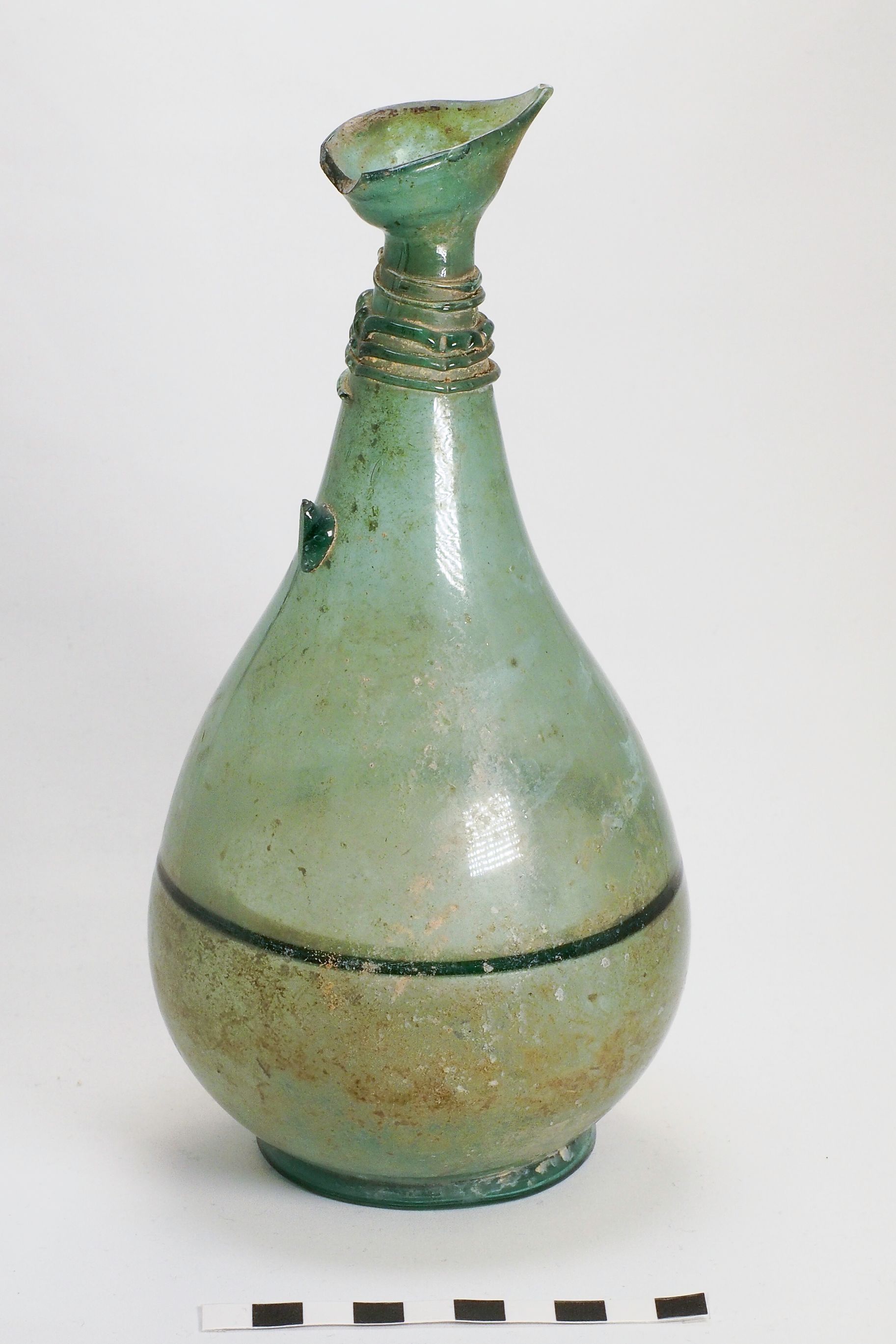Islamic Ewer
Name/Title
Islamic EwerEntry/Object ID
11NE-Mi22-160Description
The rim is pinched with the narrow pinched lip splayed slightly outwards, and resembles the shape of a duck's head. The handle that runs from the lip to the base of the neck is missing. Five bands of trailed decoration spiral around the funneled neck which flares out creating a pear-shaped body with a 5mm flange running horizontally through the broadest part of the body. The base is an applied low foot with pontil marks on the bottom. A small hole to the body was repaired; spreading fractures from the hole are stable. The vessel has trace encrustation and an old collection label to the base.Use
Tableware, Serving VesselContext
Ray Winfield attributes the technique of drawing a pointed metal tool around the circumference of the vessel’s body to originate in the fourth or fifth centuries in Mediterranean glass workshops. Later, the technique which creates an internal lip in the vessel was revived in the region of Iran during the Medieval period. The technique causes the drawn glass to be thicker than the rest of the vessel, causing the light to reflect off the surface differently, creating the appearance of a darker toned green which was more favoured. Additionally, pinched trailings around the vessel's neck is a common decorative motif used by Islamic glassmakers.Made/Created
Date made
1000 CE - 1200 CETime Period
Islamic Golden AgeEthnography
Culture/Tribe
Near Eastern - Islamic

